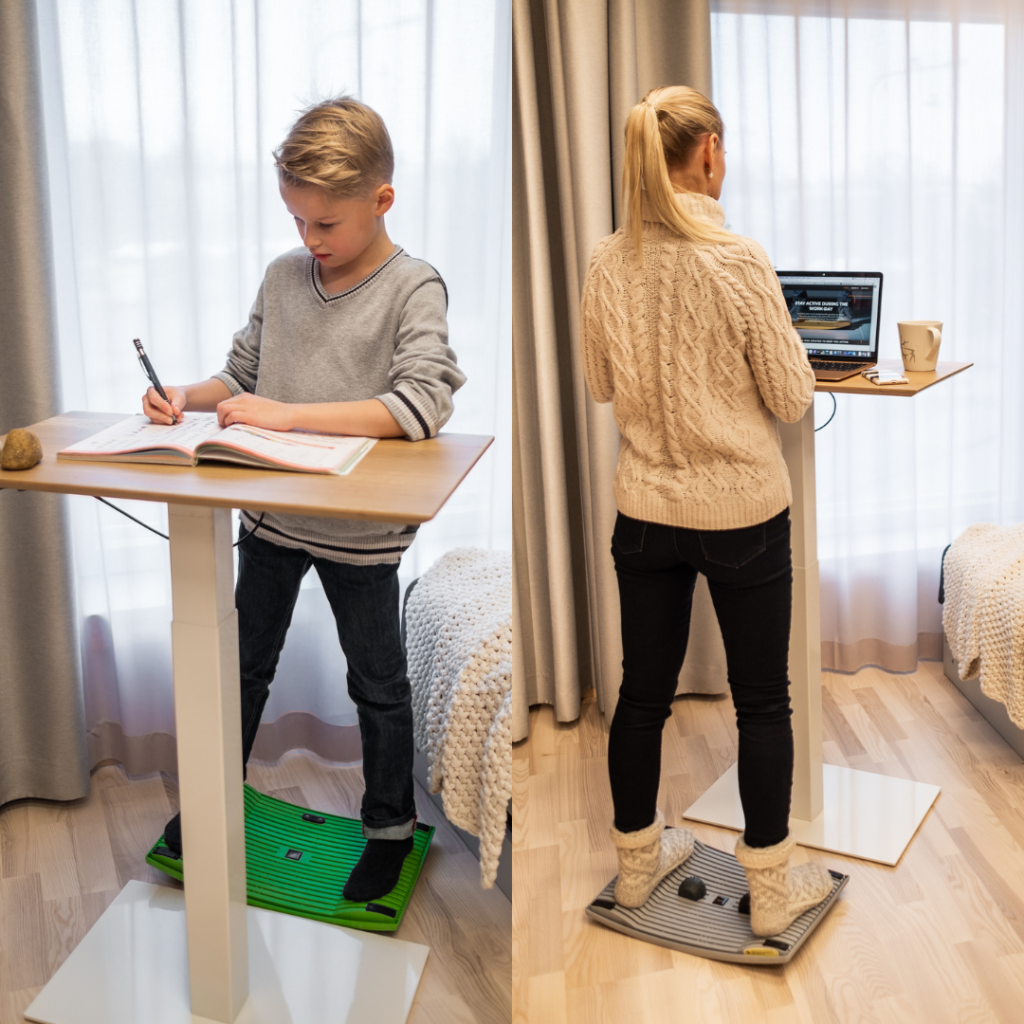Standing desks offer students numerous benefits including improved focus and concentration, better posture, increased energy levels, and reduced fidgeting in classroom settings. These ergonomic workstations allow natural movement throughout the school day, supporting physical health by reducing the negative effects of prolonged sitting. Standing desks can enhance blood circulation, promote proper skeletal development, and help students who struggle with excess energy channel it productively, ultimately creating more dynamic and engaging learning environments.
What are the benefits of standing desks for students?
Standing desks provide students with an alternative to traditional seated desks, creating more dynamic learning environments that support both physical and cognitive development. These adjustable workstations have gained popularity in progressive schools and home study areas as educators and parents recognize their potential benefits.
The shift toward standing desks in educational environments reflects growing awareness about the negative impacts of sedentary behavior on developing bodies and minds. By allowing students to alternate between sitting and standing throughout the day, these desks create opportunities for natural movement that supports learning.
Students using standing desks often experience improved alertness, better engagement with learning materials, and reduced physical discomfort compared to sitting all day. The flexibility to change positions helps accommodate different learning activities and individual student preferences, making the classroom environment more adaptable to diverse needs.
How do standing desks improve student focus and concentration?
Standing desks significantly enhance student focus by increasing blood flow and oxygen to the brain, which directly improves cognitive function and attention span. When students stand, their bodies naturally engage in small, almost imperceptible movements that help maintain alertness and prevent the mental fatigue that often occurs during long periods of sitting.
Research suggests that the slight physical activity involved in standing activates the brain’s attention systems. This gentle movement helps students maintain engagement with learning materials for longer periods without experiencing the concentration drop-off that typically happens after extended sitting.
Additionally, standing creates a more active relationship with learning materials. Students who stand while working often demonstrate better information retention and processing speeds compared to their seated counterparts. The improved posture that standing encourages also helps reduce physical discomfort that can distract from learning tasks.
Can standing desks help with student posture and physical health?
Standing desks significantly improve posture in the classroom by encouraging proper spinal alignment and reducing the slouching commonly observed with traditional desks. When properly adjusted, standing workstations help students maintain a neutral spine position that supports developing bodies and establishes healthy postural habits during critical growth periods.
Beyond posture, standing desks address several physical health concerns. They help reduce the compression of spinal discs that occurs during prolonged sitting and promote better weight distribution through the skeletal system. This proper alignment can prevent or reduce back and neck pain that many students begin experiencing even at young ages.
Standing desks also support healthy muscle development by engaging core muscles throughout the day. Unlike sitting, which can lead to weakened abdominal and back muscles, standing encourages subtle muscle contractions that strengthen these supporting muscle groups. This improved physical foundation benefits students both in and out of the classroom, supporting better overall health and reducing the risk of developing musculoskeletal issues later in life.
Do standing desks increase student energy levels and reduce fidgeting?
Standing desks effectively channel students’ natural energy into productive movement rather than disruptive fidgeting. Many students, particularly those with high energy levels or attention challenges, struggle to remain still in traditional seated environments. Standing desks provide an appropriate outlet for this physical energy while keeping students engaged with learning tasks.
The freedom to shift weight, make small movements, and adjust position while standing allows students to self-regulate their bodies in ways that seated desks restrict. This natural movement helps maintain consistent energy levels throughout the day, preventing both the restlessness and the afternoon energy crashes commonly experienced in traditional classroom settings.
Teachers often report that classrooms with standing desk options experience fewer behavioral disruptions. Students who might otherwise tap pencils, swing legs, or find other distracting ways to expend energy can instead make subtle adjustments to their standing position, helping them remain focused on learning without disturbing others.
What age groups benefit most from standing desks?
While students of all ages can benefit from standing desks, the greatest advantages are often seen in primary and middle school children (ages 6-14) who naturally possess high energy levels and are establishing lifelong postural habits. At this developmental stage, students are particularly responsive to environmental influences on their physical activity patterns.
Secondary school students (ages 14-18) also show significant benefits as they face increased academic demands and longer periods of concentration. For these older students, standing desks can help combat the fatigue and disengagement that often occurs during extended learning sessions.
University students represent another group that can gain substantial advantages from standing desks. With their independent learning schedules and varied study environments, college students can use adjustable workstations to create personalized study experiences that match their energy levels and learning preferences throughout the day.
How can schools and parents implement standing desks effectively?
Successful implementation of standing desks begins with proper introduction and gradual transition periods. Rather than switching completely from sitting to standing, schools and parents should start with a mix of options and gradually increase standing time as students build stamina and comfort with the new arrangement.
Proper adjustment is crucial—standing desks should position work surfaces at elbow height when students are standing with shoulders relaxed. For growing children, easily adjustable desks are preferable to accommodate height changes throughout the school year.
Creating supportive active learning spaces around standing desks enhances their effectiveness. Consider:
- Anti-fatigue mats and balance boards to reduce pressure on feet and legs
- Footrests or balance boards that encourage subtle movement
- Properly positioned screens and ergonomic laptop stands for improved viewing to maintain neutral neck positions
- Nearby seating options for when breaks are needed
Education about proper use helps maximize benefits. Take time to show students how to stand with good posture, how to adjust their desks correctly, and how to recognize when they need to alternate between sitting and standing for optimal comfort and focus.
Key takeaways about standing desks for student success
Standing desks offer students a pathway to more active, engaged learning through improved physical positioning and natural movement. The benefits extend beyond simple comfort to include enhanced focus, better posture, appropriate energy management, and development of healthy habits that can last a lifetime.
When implemented thoughtfully with proper adjustment and supportive accessories, standing desks can transform learning environments into spaces that support both body and mind. The flexibility to move between sitting and standing positions throughout the day helps students take ownership of their learning experience and physical wellbeing.
At Gymba, we understand how important movement is for developing minds and bodies. Our ergonomic solutions are designed to support active learning environments where students can thrive. With products that encourage natural movement while maintaining proper alignment, we help create educational spaces where physical wellbeing and academic success go hand in hand.

